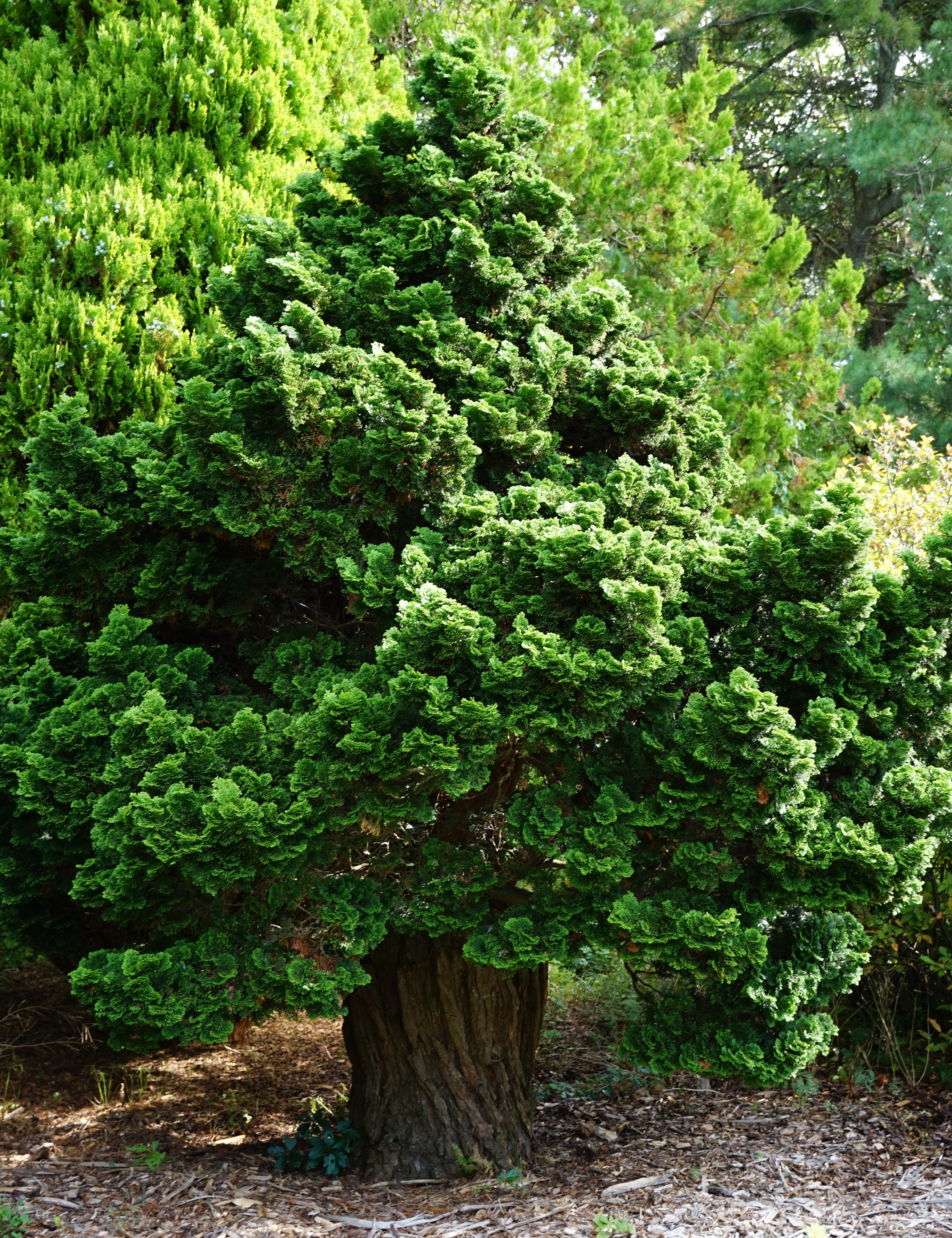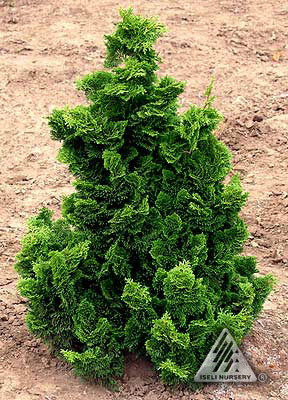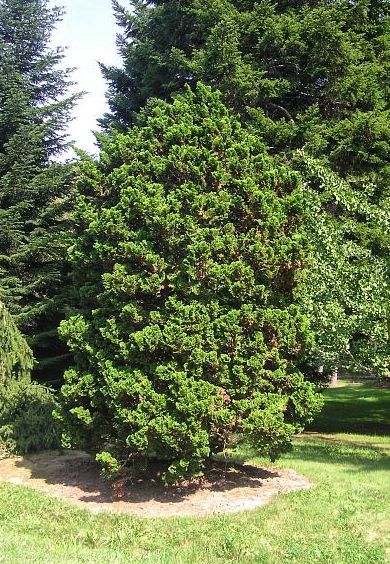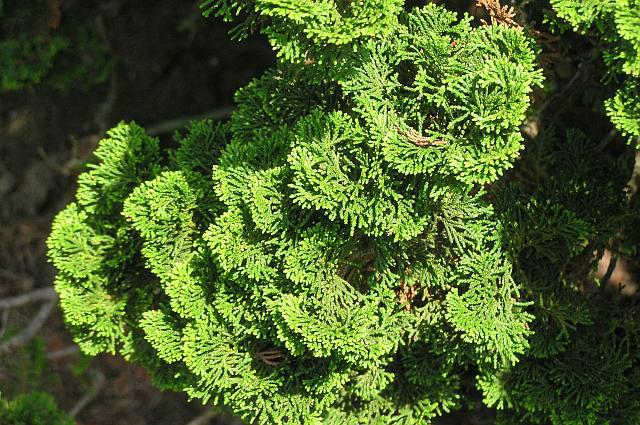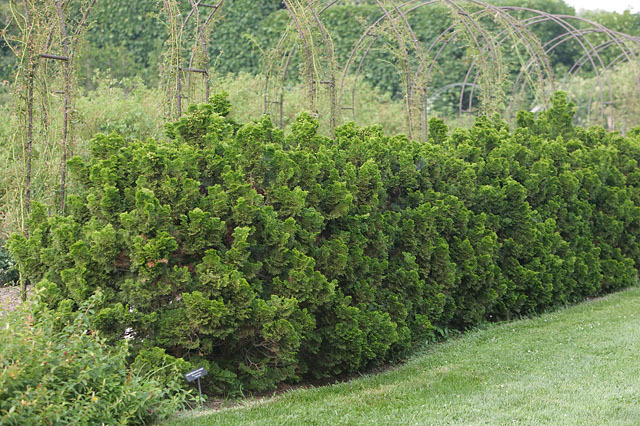[ Excerpt from Gardening with Conifers, Adrian Bloom ©2002, Firefly ] The dwarf Hinoki cypress is one of the most popular dwarf conifers, with good reason. It forms a dense, often globe-like bush when young, becoming more broadly conical with age; its glossy, dark green foliage is held in thick bunches of shell-shaped sprays with silvery markings beneath. Growth will be slower in plants that are rooted from cuttings, but these are to be preferred over those that are grafted as the latter often produce more open bushes with vigorous shoots that distort the shape.
Chamaecyparis obtusa 'Nana Gracilis' is a very attractive selection of Hinoki cypress that has stood the test of time for well over a century. Shell-like sprays of dark green foliage form an irregularly globose specimen that becomes broadly conical with age. Quite slow growing when grown as a rooted, but is often grafted which accelerates its growth rate considerably. Typical rate of growth in most areas is 3 to 6 inches (7.5 - 15 cm) a year depending on the vigor of the understock, resulting in a 4 to 5 foot (1.3 to 1.6 m) tall tree after 10 years in the landscape.
This is a very old cultivar, introduced to the nursery trade in 1867 by R. Smith at H. Rogers & Son Nurseries, Chandler Ford, United Kingdom.
